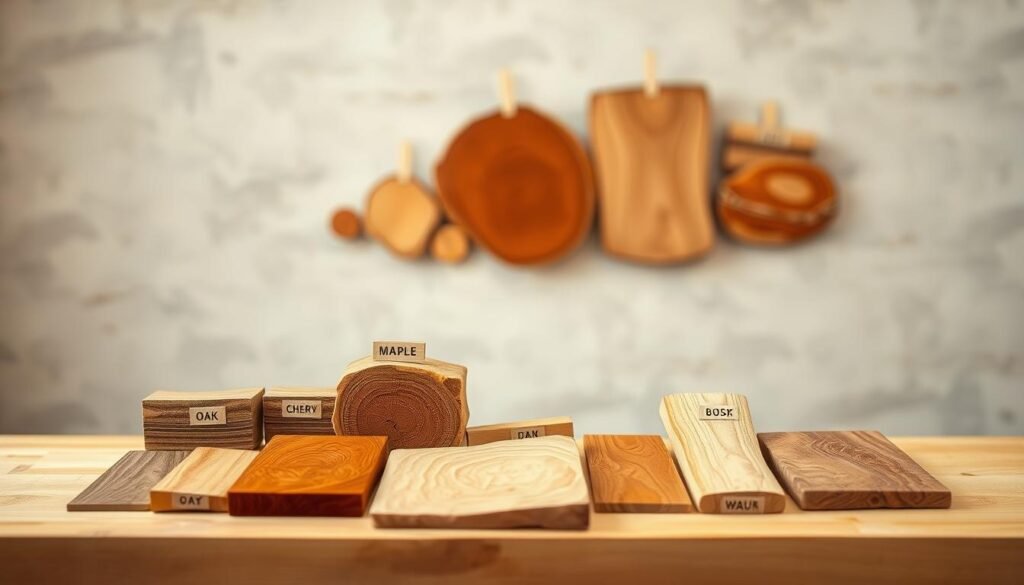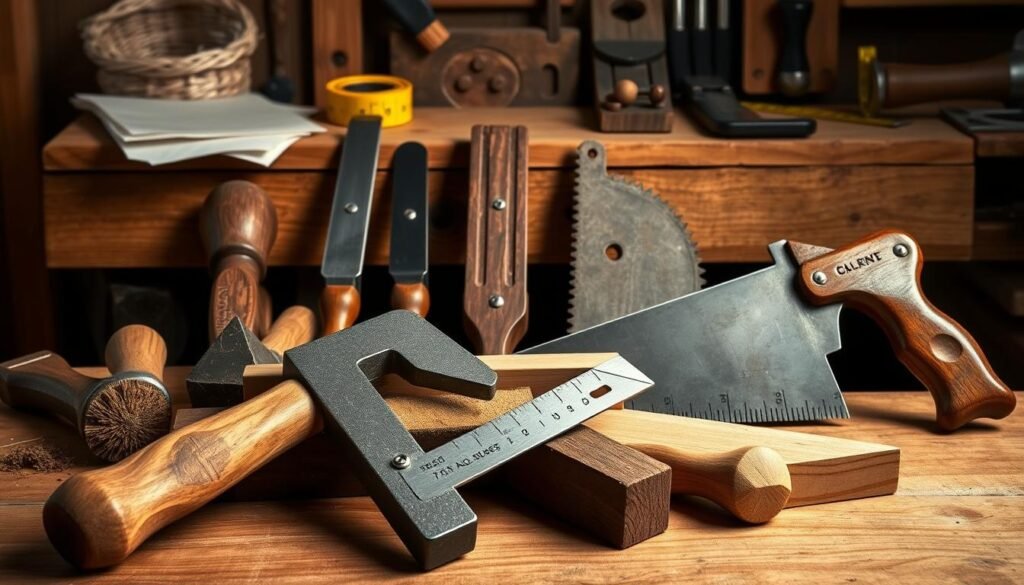Starting a woodworking project is exciting, but beware of common mistakes.
Being aware of these errors helps you avoid them and succeed in your projects.
Whether you aim for simple or complex projects, avoiding common mistakes is vital.
Why Beginner Woodworking Mistakes Happen (and Why They Matter)
Every beginner woodworker faces challenges. Finding out why mistakes happen is key to getting better. Knowing the reasons can help new woodworkers steer clear of common mistakes and make sure their projects succeed.
One big reason for mistakes is a lack of experience. Without the right training or guidance, it’s easy to misuse tools or misunderstand plans. For example, using a table saw without knowing how to align the fence can cause inaccurate cuts and be dangerous.
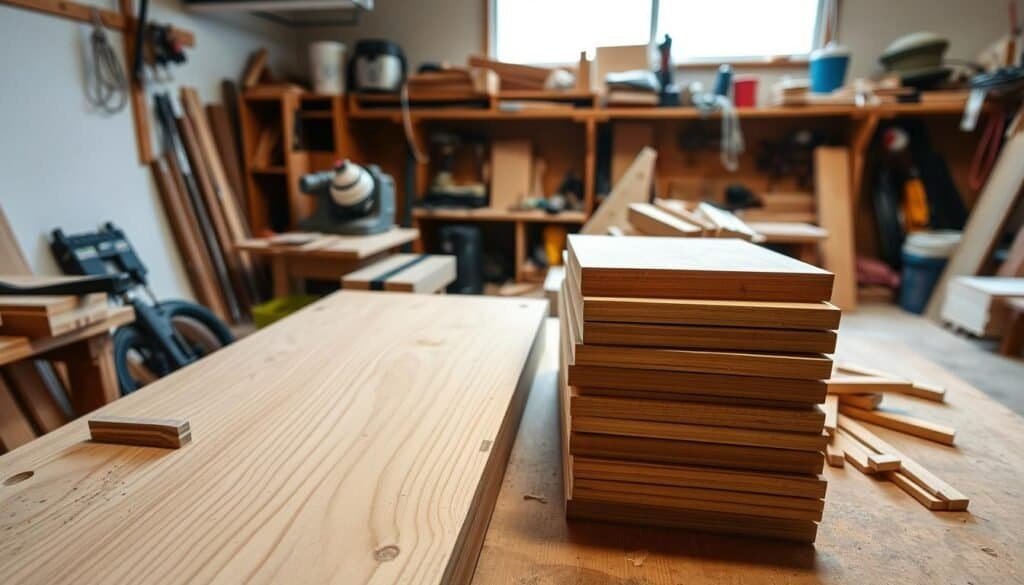
Another big factor is poor planning. Starting a project without proper preparation can lead to mistakes like wrong measurements and misplaced joints. Tips for beginners often stress the need to plan and prepare well.
Also, using DIY tools the wrong way can cause safety issues and project failures. It’s important for beginners to know how to use their tools correctly and safely.
Woodworking mistakes can cost a lot, not just in materials but also in time and safety. By understanding why mistakes happen, beginners can take steps to avoid them. This makes their woodworking journey both fun and productive.
Beginner Woodworking Mistakes and How to Avoid Them: An Overview
Starting a woodworking project right is key to success. Many mistakes come from not planning well enough.
Planning and Preparation
Good planning means more than just knowing what you want. It’s about picking the right materials and tools. It also means thinking about possible problems ahead of time.
Choosing the best woodworking tools is important. It makes your work better and safer. Learning tool hacks helps you work smarter and faster.
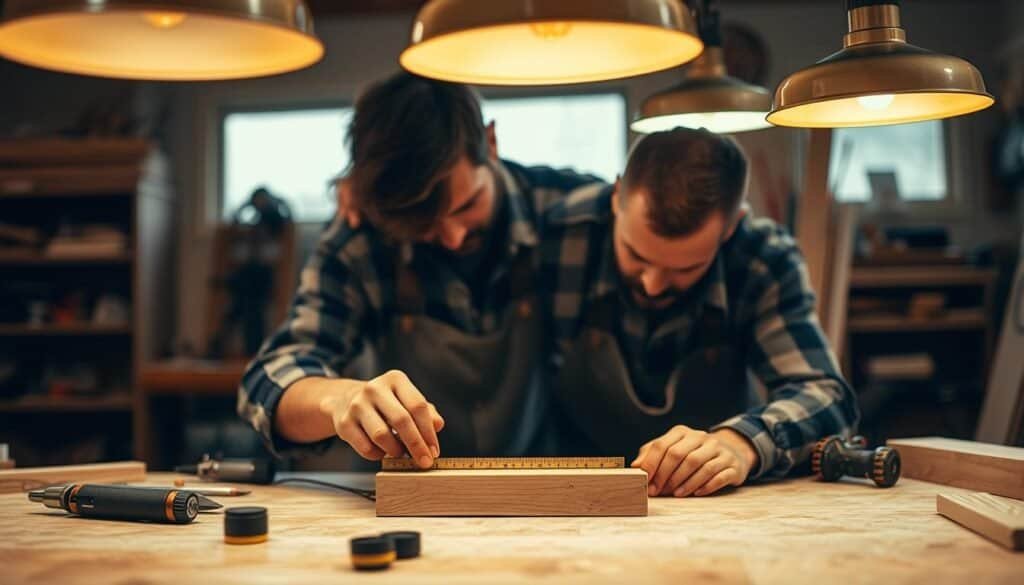
Adding DIY woodworking ideas can make your projects unique. But, make sure your ideas are doable with what you have.
Beginners should make a detailed plan for their projects. This includes measurements, what materials you need, and how to do each step. This helps avoid mistakes and makes the project more fun.
Tool Selection and Usage Errors
Choosing the right tools is key in woodworking. It can make or break your project’s success. Whether you’re doing small projects or big ones, picking the right tools is essential.
Many beginners use the wrong tools, leading to bad results and frustration. Using cool tools that fit your projects can improve your work’s quality. Also, using homemade tools well can be as good as store-bought ones, if made with care.
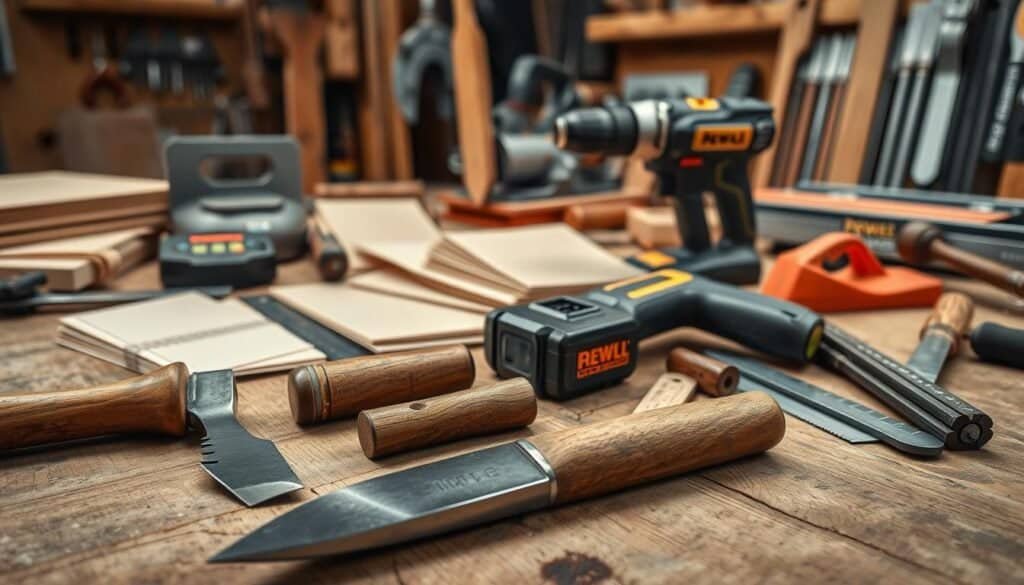
Using tools right is important for safety and doing the job well. This means knowing how to hold and use them. For example, the right grip and stance with power tools can lower accident risks.
Also, keeping tools in good shape is vital. Sharpening them, storing them dry, and checking for damage before use are simple tips. They help your tools last longer and work better.
By focusing on the right tools and how to use them, woodworkers can avoid mistakes. This improves project quality and makes the work safer. Whether you’re new or experienced, getting better at tool usage is always worth it.
Measurement and Planning Mistakes
In woodworking, getting your measurements right and planning well is key. Even the best woodworkers can make mistakes if they don’t measure and plan carefully.
One big mistake is reading the tape measure wrong or getting the project’s size wrong. To avoid this, always double-check your measurements. Use a calculator to check your math. Also, a story stick or jig can help make your measurements accurate and consistent.
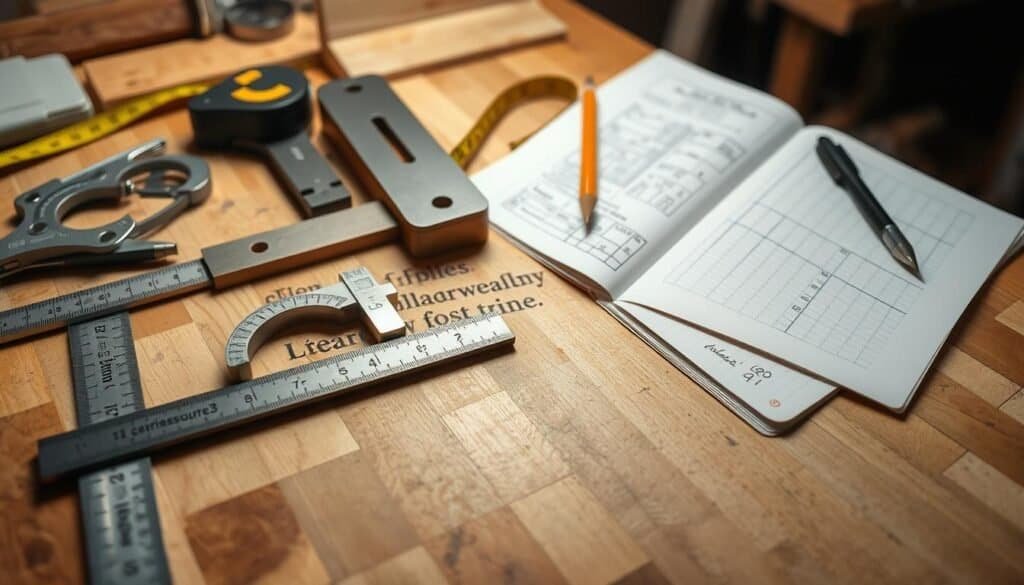
Good project planning is vital for woodworking success. You need a detailed plan, including a cut list, materials list, and step-by-step guide. A clear plan helps you avoid mistakes, makes sure you have all the materials, and lets you finish the project quickly.
When planning, think about the tools and techniques you’ll use. For example, handmade wooden tools can be very useful. Also, plan your workflow to make the project easier. Learning woodworking techniques and using them in your projects can improve your planning.
To succeed in making furniture, be very careful with your planning. Choose the right materials and design with the user in mind. Anticipate any challenges. This way, you can make beautiful and useful furniture for your home.
Safety Oversights That Can Cost You
Woodworking is all about safety. It involves powerful machines and sharp tools that can be dangerous if not used right. A safe workspace lets you focus on your projects without worrying about getting hurt.
Many beginners forget the importance of wearing protective gear. Safety glasses, ear protection, and dust masks are key to avoiding injuries. A clean and organized workspace is also vital to prevent accidents. Clutter can cause tripping and make it hard to work efficiently.
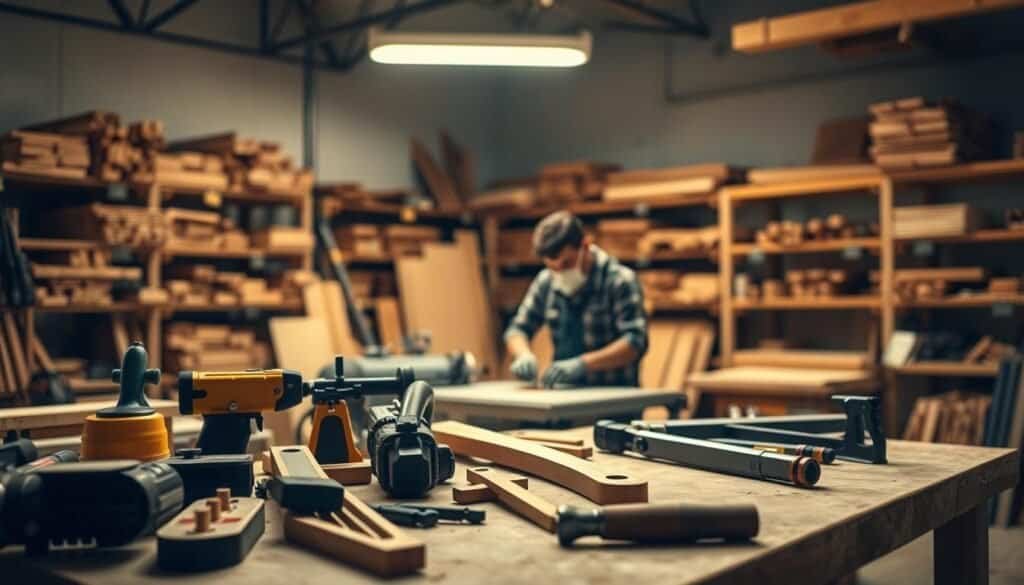
To keep your workspace safe, follow best practices. Always read and follow the tool and machinery instructions. Regular maintenance is also important to keep your equipment in good shape. Having a first aid kit nearby is a good idea in case of small accidents.
It’s also important to avoid loose clothing or jewelry that could get caught in tools. Keep your long hair tied back. Good lighting in your workspace helps prevent accidents by improving visibility.
For those selling simple wooden crafts, managing your workspace is key. A clean and organized space helps you work efficiently and safely. This ensures your projects are done well and safely.
By following these safety tips, you can greatly reduce the risk of accidents. Whether you’re working on big projects or small crafts, safety should always be your main concern.
Material Selection and Handling Errors
The success of a woodworking project depends a lot on choosing and handling materials well. Whether you’re making modern wood projects or traditional carpentry, knowing about different materials is key.
Choosing the wrong materials for a project is a common mistake. For example, using softwood for a job that needs hardwood can be disappointing. Learning about different types of wood and their uses helps you make better choices.
Proper Material Handling Techniques
After picking the right materials, handling them correctly is vital. This means keeping wood in a dry, well-ventilated spot to avoid warping or rot. Using the right tools, like proper lifting gear, helps prevent damage to both the materials and the person working on them.
For projects needing precise cuts or detailed work, like those with a jigsaw, handling the material carefully is essential. Techniques like scoring the cut line or using a backing board can help avoid splintering or cracking.
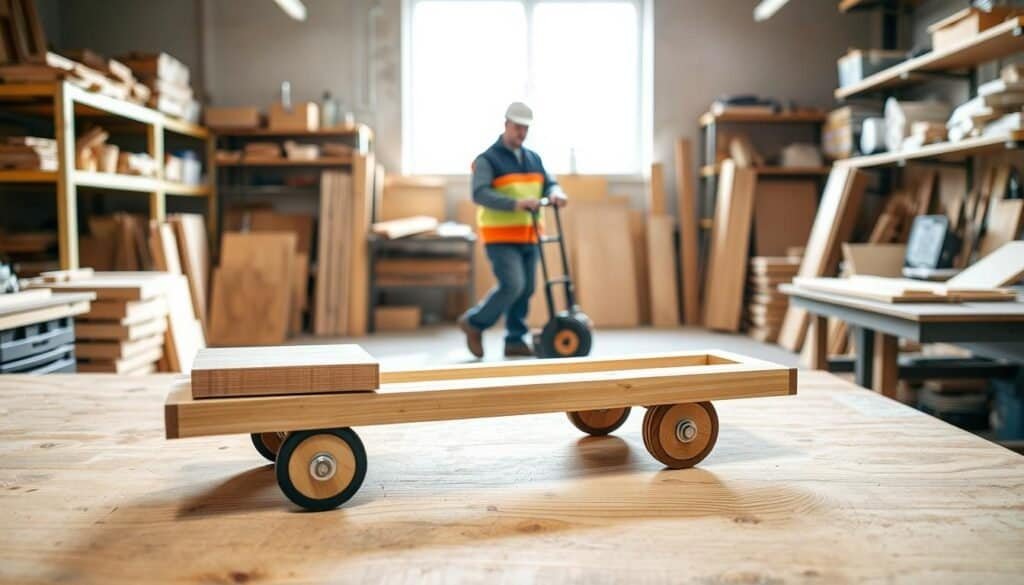
By focusing on careful material selection and handling, woodworkers can greatly improve their project’s quality. Whether you’re starting out or want to get better, understanding these basics is essential for achieving professional-looking results in your woodworking projects.
Joinery and Assembly Blunders
Woodworking projects can fail due to joinery and assembly mistakes. Joinery connects wood pieces together. When done right, it makes the project strong and durable. But, common errors can cause weak joints and misaligned parts, leading to failure.
Choosing the wrong joint type is a common mistake. For example, using a simple butt joint when a mortise and tenon joint is needed can weaken the piece. Knowing the different joints and when to use them is key. For “hand tool woodworking projects,” mastering traditional joinery is important for both looks and durability.
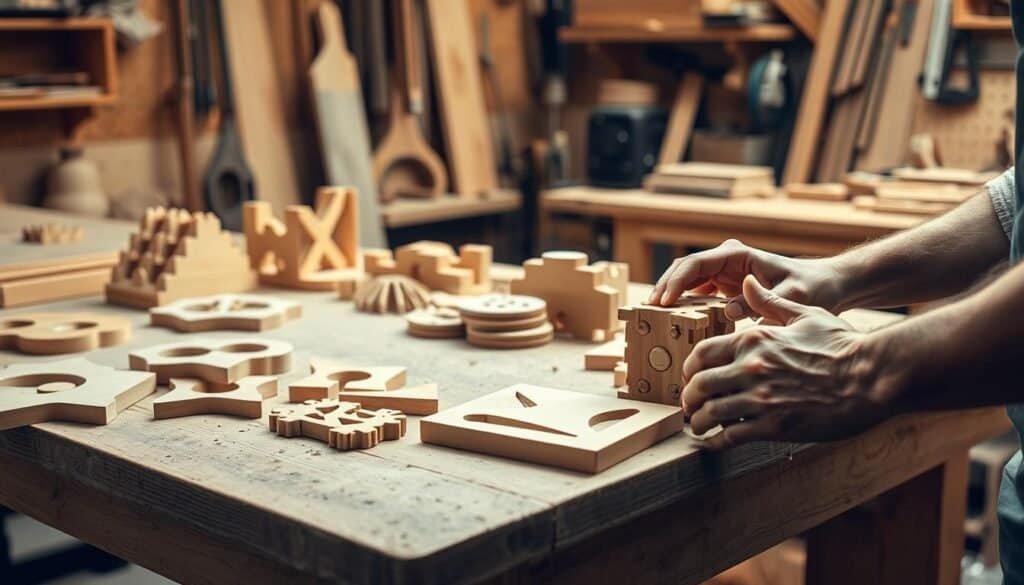
Assembly errors are also common. Rushing or not following the plan can cause parts to not fit right. It’s important to take your time and follow a step-by-step approach. For “jigsaw projects diy,” making sure pieces fit before gluing or fastening is critical.
Tips for Successful Assembly
To avoid assembly mistakes, prepare all parts as your “woodwork plans” suggest. Check measurements and ensure parts fit together as planned. Doing a dry run without glue can spot problems before the final assembly.
Having the right tools is also essential. For detailed work, jigsaws are a must. They help with precise cuts, which is vital for “jigsaw crafts woodworking.” Keeping tools in good shape and using them correctly can help avoid assembly errors.
Lastly, patience is important. Assembly takes time, and rushing can lead to mistakes. Take your time to make sure each joint is secure and the structure is solid. By following these tips and being aware of common mistakes, you can make sure your woodworking projects turn out well.
Finishing and Sanding Missteps
To make your woodworking project look great, avoid common sanding and finishing mistakes. A well-finished project looks better and lasts longer.
One big mistake is not using the right grits. Start with a coarse grit and move to finer ones for a smooth finish. Skipping grits can cause hard-to-remove scratches.
Sanding Techniques for a Professional Finish
Using the right sanding techniques is key. A sanding block is best for flat surfaces to keep pressure even. For curved areas, flexible tools or sandpaper work well.
Always sand with the wood grain to avoid scratches. For complex projects, wood working jigs can help with sanding and accuracy.
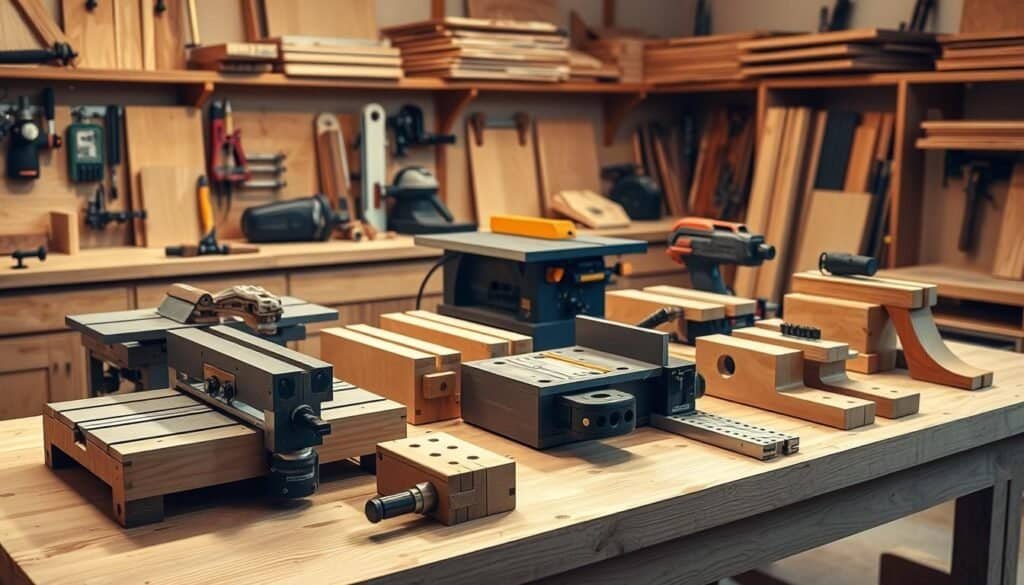
Finishing mistakes can ruin a project’s quality. Too much finish at once can make the surface sticky or uneven. Apply thin coats, letting each dry as directed.
For simple projects, the right finishing techniques make a big difference. Try unique stains or finishes to make your project stand out.
Using a microfiber cloth between coats can also help. It removes dust and debris for a professional look.
By avoiding these mistakes, woodworkers can ensure their projects look professional. This enhances their appearance and value.
Project Management and Workflow Issues
Streamlining your workflow is key to finishing woodworking projects well. Good project management helps avoid delays, cost overruns, and poor finishes.
Managing your woodworking workflow well is a big challenge. It means planning, doing, and checking the project from start to end. To do this, you need to prioritize tasks, use resources smartly, and keep your workspace tidy.
Optimizing Your Workflow
Improving your workflow boosts productivity. Begin by finding the tasks that take the most time and see how to make them easier. Think about getting tools or equipment that can make repetitive tasks, like scrap wood crafts or creative woodworking ideas, faster.
Batching similar tasks together is another good idea. For example, if you’re working on several projects that need sanding, do all the sanding at once. This saves time and lessens the mental tiredness from switching tasks too often.
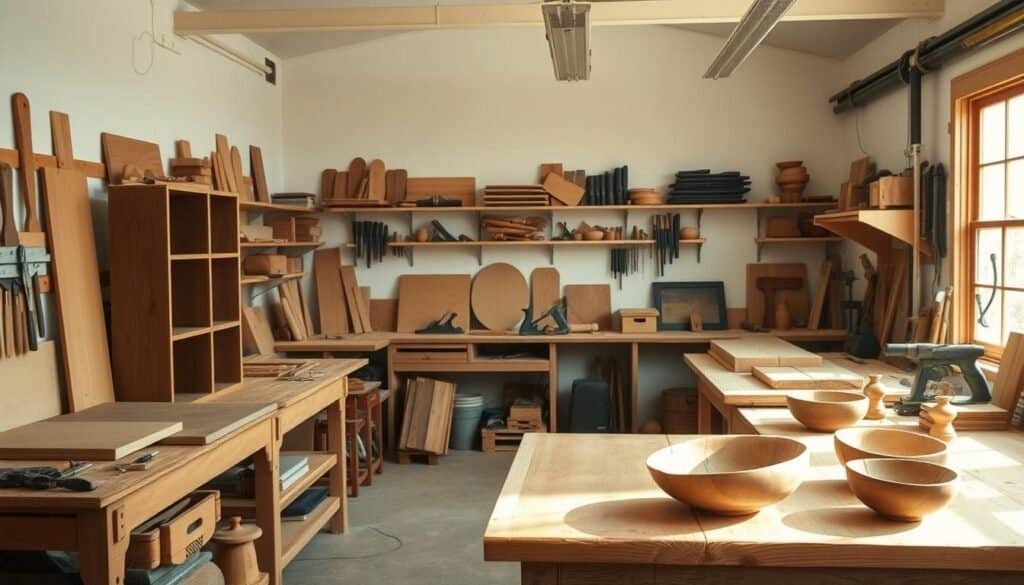
By using these methods, woodworkers can get better at managing projects, feel less stressed, and make their work better. Whether you’re on best selling wood projects or trying out new scrap wood ideas, managing your workflow well is essential for success.
Conclusion: Building Success by Avoiding Common Pitfalls
Understanding and avoiding common mistakes can boost your woodworking skills. Whether you’re making simple or complex projects, focus on details and planning. This is essential.
Start with easy projects to gain experience and confidence. As you get better, you can take on harder tasks. This will help you build a loyal customer base.
Success in woodworking comes from patience, practice, and persistence. Use the tips from this article to create beautiful, functional pieces. Show off your skills and craftsmanship.


